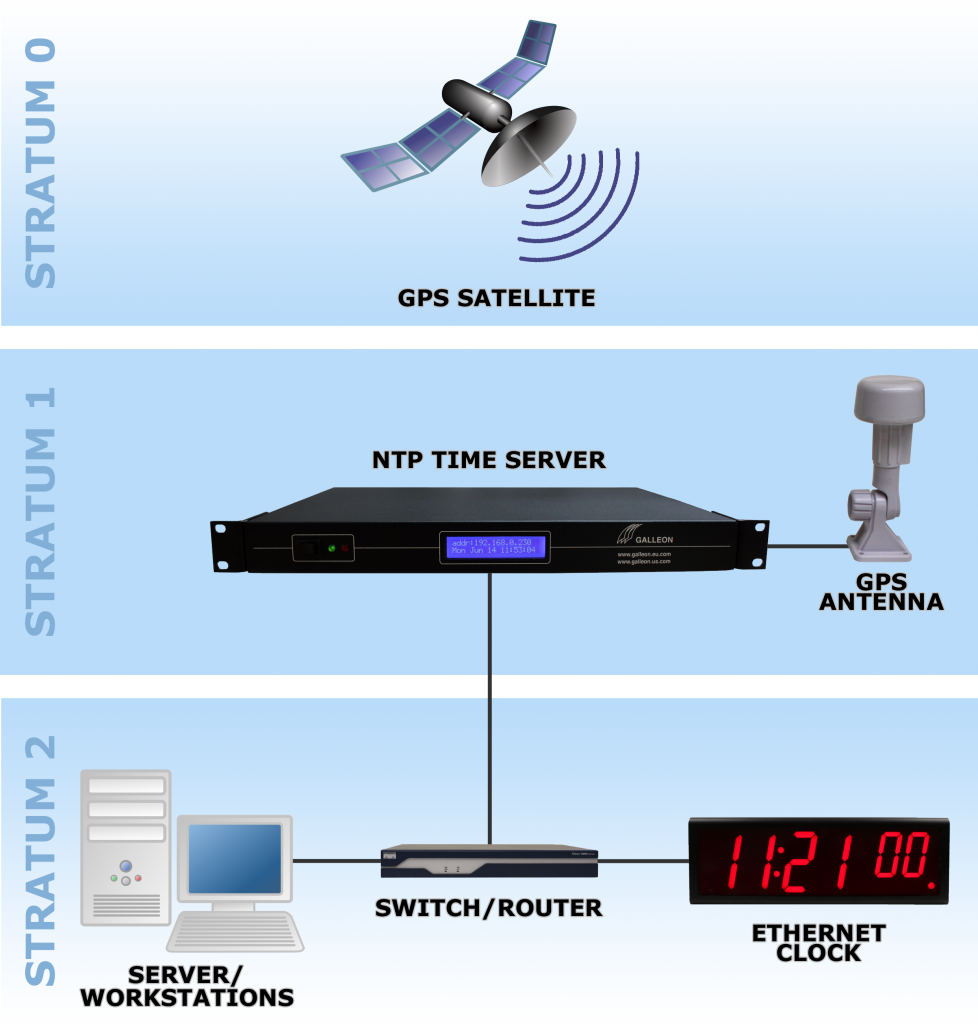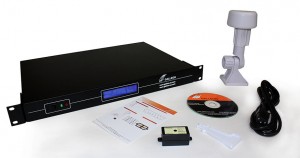What Time Server Do I Need For My Business?
Modern businesses are no longer local. The internet and global communications means that even a small business might have to regularly trade overseas and often across time zones, and this means that accurate time is crucial. On a computer network, virtually every transaction is reliant on time. Time stamps are the only means a computer has of knowing when and if a transaction or process has taken place. Accurate stamps from a time server are required for billing systems, database sorting, network diagnostics and for nearly all transactions conducted over the internet. If any of this applies to your business, perhaps it’s time to ask yourself “What Time Server Do I Need?”
All computers have inbuilt clocks, which are used by operating systems to generate time stamps. However, system clocks are not very accurate. These quartz oscillators can drift over time, which means different computers on a network can soon be telling different times. These differences can wreak havoc on a network, leading to processes failing, data getting lost, transactions happening at the wrong time, and insecurities developing.
For a network to function properly, what is needed is a single source of time from which all computers on the network can receive a single master time to use to generate time stamps. However, with modern computer networks, this master time source needs to match the time used by other computers on other networks which it may communicate with, otherwise the time differences when communicating with external systems could cause the same problems.
What is a time server
A time server is a device that synchronises a computer network to a single master time source, so that all devices on that network are using the exact same time. Not only does a time server keep all devices on a network synchronised, but also it ensures that a computer network, no matter where it is in the world, is also synchronised to other computer networks, enabling trouble free communication.
A single time server is able to synchronise a network of hundreds of devices and workstations, and the secret to its ability to maintain accurate and precise time is NTP (Network Time Protocol). Time servers use a master time source, which it uses to distribute around a network using NTP. NTP is a software system that checks the time on all system clocks and adjusts them to match the time received by the time server, but what makes the whole system special, is the time used by the times server.
Because a network may have to communicate with other networks across the globe, a source of time is required that is ubiquitous. This means no matter where an network is, or what time zone it is situated in, the same single time source can be used, ensuring trouble free transactions. To achieve this, a time server uses as its master time source, NTP time.
What is NTP Time
As discussed in our previous post: “What is NTP Time and How Does it Benefit Me” NTP time is a global timescale used by computer networks across the globe. Often referred to as Coordinated Universal Time (UTC), NTP time has several advantages over other time sources. Firstly, NTP is not affected by time zones. Time zone information is dealt with by individual machines, but not by the UTC, which is the same everywhere on the globe. Secondly, NTP time is kept true by atomic clocks, which means it remains incredibly accurate.
Time signal radio signals come from various physics laboratories. The main ones include the MSF signal in the UK, which is generated by NPL (National Physical Laboratory), which is broadcast from Cumbria; the WWVB time signal generated by NIST in the USA (National Institute for Standards and Time), which is transmitted from Colorado; and the DCF signal, broadcast by Germany’s Physikalisch-Technische Bundesanstalt, which is transmitted from Frankfurt.
Many of these radio time signals are available outside the country of origin and they provide a reliable, accurate and secure source of time. However, there is an alternative. GPS satellites require atomic clocks to allow satellite navigation systems the means to triangulate position. Because these signals are transmitted from orbit, they are available anywhere on the planet and can be used as a source of time for a NTP time server.
Why not use internet time?
Of course, the internet is awash with sources of NTP time that many people think provide just as accurate and reliable a method of providing a time source for a computer network. However, because receiving these internet time sources requires an open port in the network firewall (UDP port 123) to allow the signal to get through. This poses a security risk, because not only can the time source get through this open network gateway to a network, but also they can provide access for malicious software to penetrate a network.
Another problem with internet time sources is their accuracy. Surveys have found that many internet times servers are not at all accurate, and less than a third offer any use for time synchronisation. This is because most of these time servers are not stratum 1 devices. In other words, they don’t get their time direct from a time server, but instead rely on a third party. Latency, distance and the fact that internet connections go down can mean that often, internet time servers can have inaccuracies of several seconds, which in the world of NTP, is a massive deficit.
What time server is right for you business?
Choosing the right time server for your business first requires you to decide which times source is most suitable. GPS is now the most popular time source used by time servers. However, receiving GPS time is not always practical. In order to receive the time signals from GPS satellites, an antenna needs a clear view of the sky, which normally means it has to be placed on the roof of a building. In some cases, this is not always practical, so a radio referenced time server is a better solution.
An MSF, DCF or WWVB time server doesn’t require a rooftop antenna, and as mentioned earlier, you can even receive the time signals from neighbouring countries. Occasionally, these signal can be affected by interference, so the time server needs to placed in a location where metal objects or machinery won’t cause problems. Furthermore, radio time signals are occasionally switched off for short periods. These outages are only temporary and normally don’t cause any problems with the time synchronisation of a network. However, to avoid any outages, dual systems that receive both GPS and radio signals ensure a source of interrupted time.
Another consideration for choosing a time server is the number of devices that need to be synchronised. Some networks require thousands of NTP requests per minute, which means the time server needs to be able to handle such traffic, while for other networks, the number of requests is far fewer, so a less sophisticated time server can be used.
Examples
At Galleon Systems, our highly experienced advisors can give you all the information and advice you need to make the right decision when it comes to a choosing a time server. Our NTS time server range is used by all sorts of companies and organisations across the globe, from large multinationals, to small and medium sized businesses. Here are some examples of organisations that trust Galleon Systems with their time synchronisation:
Twitter – Global social networking website, Twitter, uses two NTS-6001-GPS time servers from Galleon Systems. These devices are true Stratum 1 NTP Time Servers that use GPS as a time reference. They can handle 10,000 NTP requests per minute and consist of a solid state memory that eliminates disk failure and ensures reliability.
EDF Energy – UK energy provider EDF Energy uses a dual NTS-4000-GPS-MSF time server from Galleon Systems, which receives both MSF and GPS time sources. Able to handle 3000 NTP requests per minute, this true Stratum 1 NTP Time Server also consists of a solid state memory.
Dorset Police – The South West constabulary of Dorset has installed an NTS-4000-MSF from Galleon Systems to handle their police computer’s time synchronisation needs. The NTS 4000 is a solid state system that utilises the Cumbrian MSF signal and can handle 3,000 time request per minute.
All NTS Time Servers from Galleon Systems come with a 6-year warranty. For more information or to discuss you business’s time server needs, contact one of our experienced advisers now.

